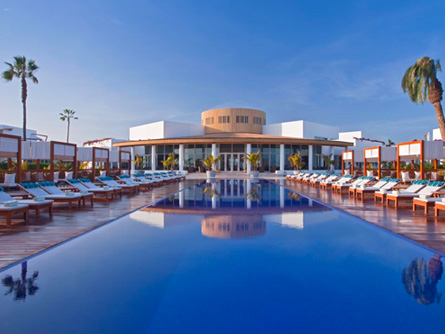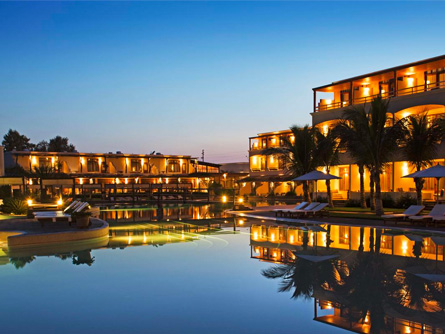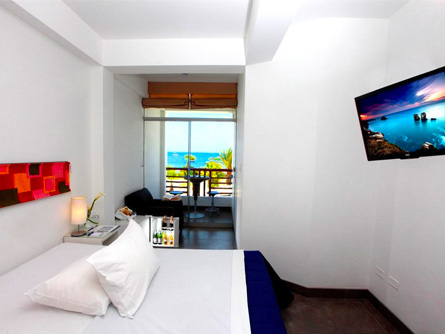
Kim MacQuarrie
Four-time Emmy-winner

Incredibly rich ecosystems and desolate beauty are found in Peru’s coastal desert destination of Paracas. Board a speedboat out to the Ballestas Islands, by far the most popular of all Paracas tours, and enhance your exploration of the region with an overnight at one of the premier accommodations and trip to the national reserve.



Take a boat tour to the protected Islas Ballestas and spot the rare marine life that inhabits this rocky archipelago. Look for Humboldt penguins, Peruvian pelicans, South American sea lions, and many other animals.

The Paracas National Reserve guards beautiful beaches, miles upon miles of open desert, and dunes. Sandboarding, ATV rides, and kayaking are just a few ways to experience the region.

This glyph is an iconic Paracas landmark etched into a seaside cliff and can be spotted en route to the Ballestas Islands.

Luxury Paracas hotels feature bayfront locations, expansive properties with pools, and gourmet restaurant meals. Seeking rest and relaxation during your trip? This may be the spot!

Avenida Paracas (no number), Paracas
Ideally located on the Paracas Bay in front of the nature reserve of Paracas, the hotel’s five-star amenities include 2 swimming pools, a bar-lounge and deluxe spa. There are a variety of family-oriented activities and a Kid’s Club area

Urbanizacion Santo Domingo Lote 25, Paracas
This understated hotel offers comfortable accommodations in the spectacular seaside setting of Paracas. Each room has a bathtub and a private terrace, while the hotel’s grounds boast a luxurious spa, swimming pool, bar, and restaurant.

Av. Principal de Paracas Mz.D lote 03, Paracas
Centrally located for exploration of El Chaco, Gran Palma is an excellent budget hotel option in Paracas. Breakfast is served on the 4th floor terrace with gorgeous views to the sea.
Peru is filled with archaeological ruins, scenic landscapes, and delicious flavors. Must-see places in Peru include:
Peru is filled with archaeological ruins, scenic landscapes, and delicious flavors. Must-see places in Peru include:
Hike the Inca Trail to Machu Picchu in four or two days. The Inca Trail is a 500-year old pathway where the elite Incas once entered into the “Lost City of the Incas”. Plan with your Peru for Less travel advisor in advance, Inca Trail permits tend to sell out even 6-months in advance.
Step into the lush Peruvian Amazon Rainforest and witness a spectacular array of wildlife in its natural habitat. Lodges in Puerto Maldonado are ideal for excursions and daily activities. Those looking for a more luxurious Amazon experience would love an Iquitos Amazon River cruise. Colorful macaws, giant tarantulas, and playful river otters are among the sights you’ll behold.
Cusco city has it all, archaeological ruins, colonial buildings, top-rated restaurants, and countless places to explore. Your Cusco City Tour will take you to the top highlights like Sacsayhuaman, Q’enko, the Cusco Cathedral, and more.
Sail on the deep blue waters of Lake Titicaca and step on the reed Uros and Taquile floating islands. Some of the best weavers are found in this area so pick up some Peruvian textiles here for unique souvenirs.
Lima is a mixture of modern city living and historical significance. Here you’ll find Central restaurant (ranked #6 by 50 Worlds Best), UNESCO World Heritage sites like Historic City Center with the San Francisco Convent, and the best shopping in Peru.
The Nazca Lines are mysterious geoglyphs and geometric shapes drawn onto the desert floor hundreds of years ago by the Nazca culture. Little is known about them nevertheless, the Nazca Lines inspire awe in those who take a flight over them.
Arequipa is a picturesque town and also the second-largest city in Peru. Local markets, beautifully built colonial architecture, and El Misti volcano are among the things you’ll see while walking the cobblestone streets of the white city.
Paracas is accessible by road from Lima and is a 4-hour bus ride. Driving in a rented car takes about 3 hours. From Cusco to Paracas you must first fly to Lima and then take a bus or drive.
Paracas is a great destination for an adrenaline boost, offering adventure sports like sandboarding giant desert dunes, kayaking and paddle boarding on Paracas Bay, and ATV rides in the Paracas National Reserve. You can also get your thrills by taking a flight over the Nazca Lines.
The best tour option for couples in Paracas is a romantic sunset picnic inside the Paracas National Reserve. A tent with a delicious spread is set up in the desert for you and your loved one to enjoy a once-in-a-lifetime moment together in Peru.
Animal spotting on a boat tour of the Ballestas Islands, exploring the Paracas National Reserve, and checking out the elongated skulls at the Paracas History Museum are all great tours for families visiting Paracas!
Spending at least 2 days in Paracas is best due to the 8-hour round-trip bus journey from Lima. This is enough time to do both a Nazca Lines overflight and a Ballestas Islands tour, as well as enjoy your hotel amenities. For a more leisurely pace, 3 days will give you more time to relax by the pool or take advantage of the sports equipment at your hotel, like paddleboards and kayaks.
Thanks to the nutrient rich Humboldt current off the coast, Paracas is rich in wildlife! 200+ bird species, 19 mammals, 52 fish species and 6 reptile species can all be found in Paracas. Animal highlights include:
Paracas is very touristic and has a large variety of hotels and hostels along the bay. Our Top Pick Paracas Hotels are: